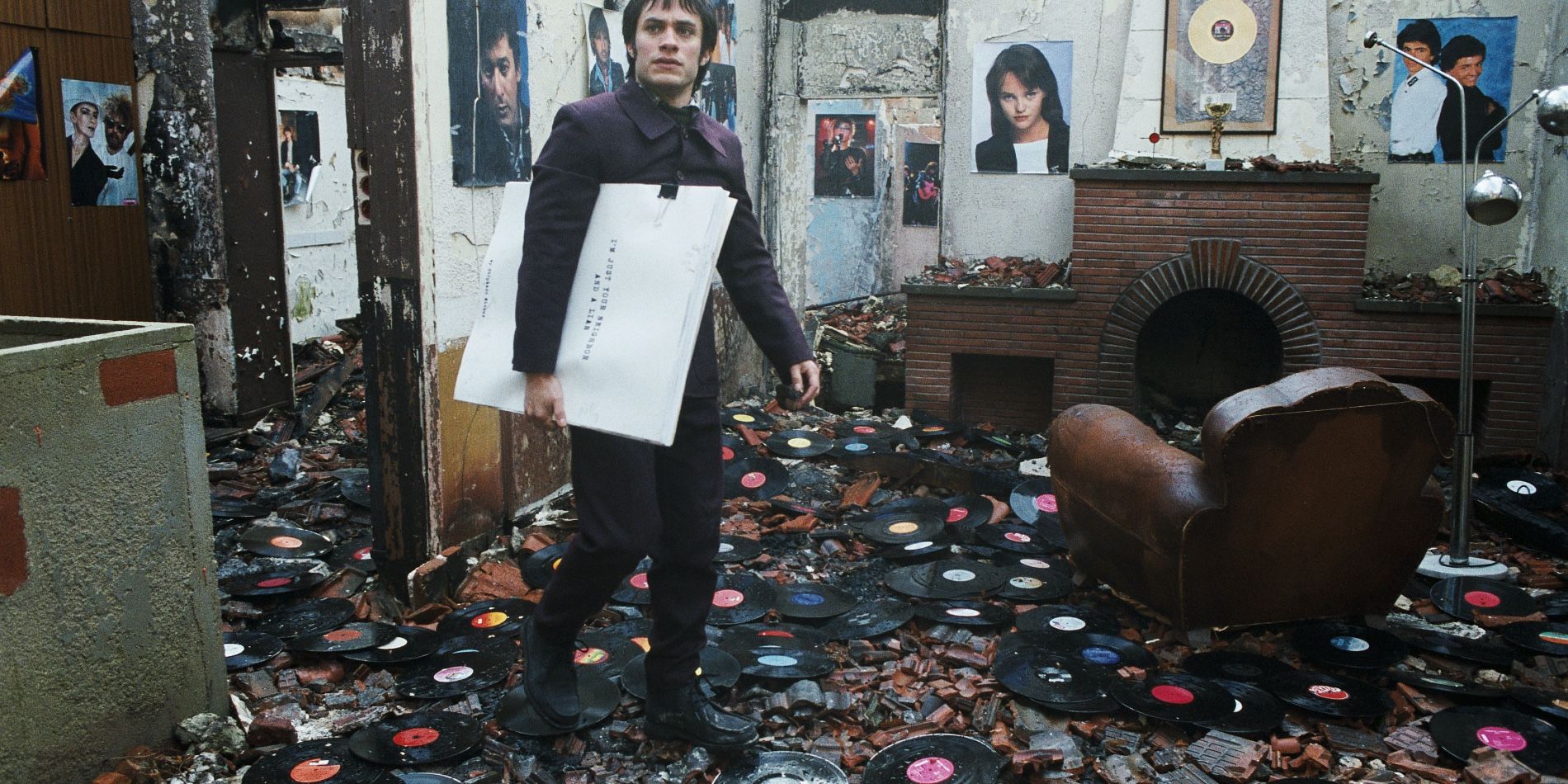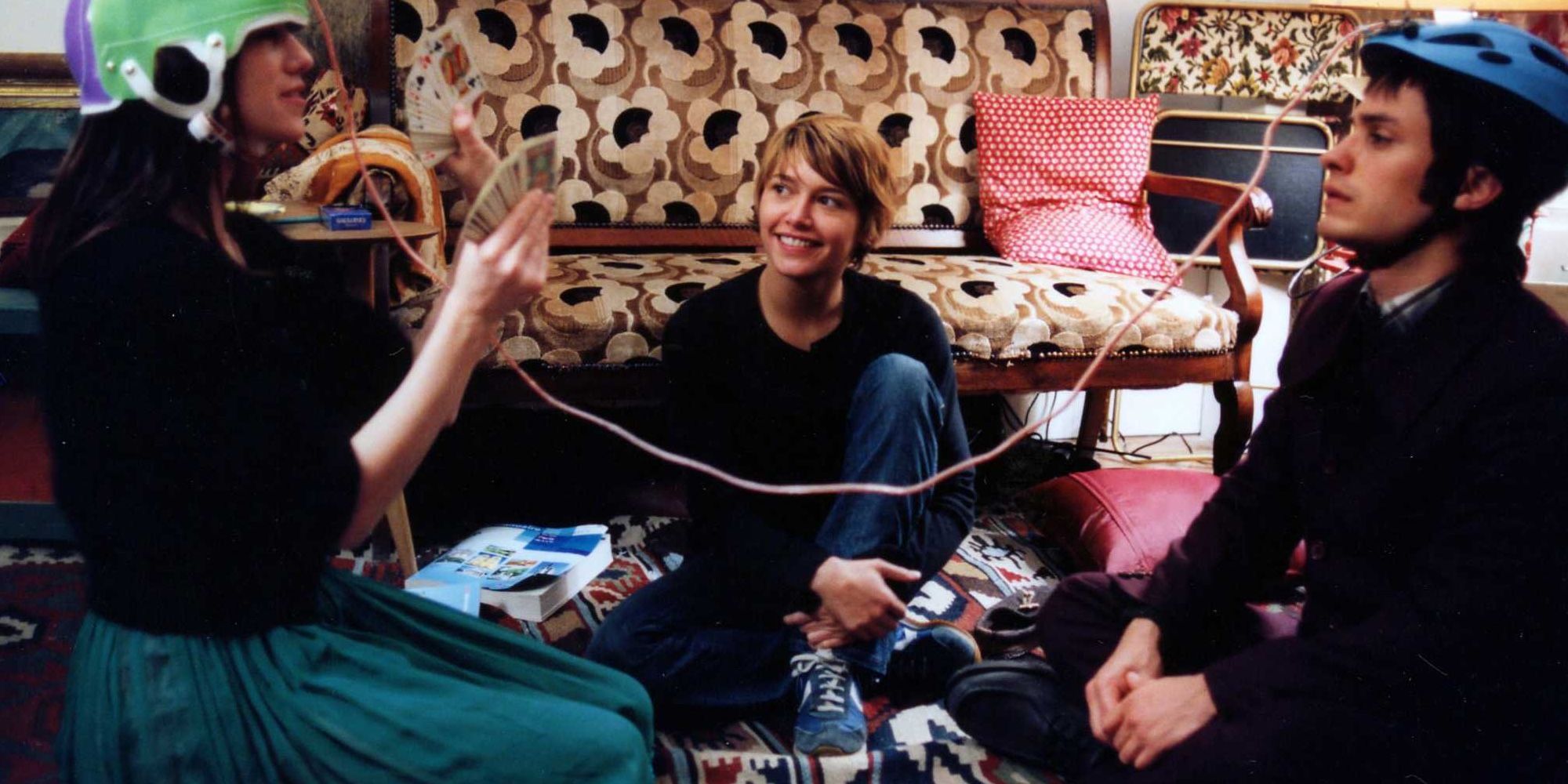Eternal Sunshine Of The Spotless Mind Fans Will Love This Film
Dreams are an unexplained phenomenon but something that every single person experiences. There have been debates about the meaning of dreams; are they memories of a past life? Do they predict the future? Or are they completely meaningless? Michel Gondry’s 2006 film The Science of Sleep delves into this topic in the mind of its protagonist Stéphane.
Two years before The Science of Sleep, Gondry’s now cult-classic Eternal Sunshine of the Spotless Mind was released, starring Jim Carrey and Kate Winslet. The film explores what would happen if memories were erased after an emotional breakup. Gondry is a proponent of fantasy and imagination. His films show how our brain reconstructs reality, whether with memories in Eternal Sunshine or dreams in The Science of Sleep.
RELATED: This Forgotten Jim Carrey Movie Is So Bad You Have To See It For Yourself
Michel Gondry’s The Science of Sleep is a romantic comedy with a much deeper meaning. The film follows the story of Stéphane (Gael García Bernal), a young man who moves from Mexico back into his childhood home in France after his father’s death. He is promised by his mother a creative job as an illustrator for a magazine, but upon arrival, instead is greeted with a peon job of typesetting.

As the film progresses, it is discovered that Stéphane has a difficult time distinguishing dreams from reality. This causes problems within his relationships, jobs, and his sanity. As Stéphane moves back home to his mother, he meets his new neighbor: a beautiful woman named Stephanie (Charlotte Gainsbourg), who he quickly deems as his soulmate. Stéphane shows up unannounced at her front door almost every day, constantly overstepping boundaries to be close to her. Stéphane’s dreams tell him he is in love with Stephanie: blurry, child-like fantasies of the two on a cloud seemingly made of cotton, riding on a cartoon horse, and vibrant cities, all created out of clay and crafts. The film cuts back and forth between dreams and reality. When real life comes to fruition, truth reveals otherwise of Stéphane.
Through all the different dreams and sequences, certain things hint at Stéphane's toxic behaviors. He ultimately falls in love with Stephanie before he knows her. Even her name implies Stéphane is looking to fill a hole within himself, rather than loving a whole, actual human soul; her name is the feminized version of his name.
The two of them do form a special connection, though. Stephanie helps Stéphane with his animated film: building clay boats, houses, etc. She admires his love of his stuffed animal horse, showcasing Stéphane’s childlike demeanor when he is around her. At the same time, the Stephanie that Stéphane's made up in his mind is not the Stephanie he “loves.” The real Stephanie is not a dreamlike, perfect woman. She has hidden tattoos, doesn’t want to get married, and comments on Stéphane's neurotic behaviors. She tells him that she isn’t interested in being in a relationship but continues to be there for him in a mature way. Stéphane doesn’t see it this way, though; he believes she is his soulmate, although he is in love with a completely fabricated version of her.
The scenes in The Science of Sleep are shot to reflect the fluidity and chaos of Stéphane’s dreams. Specific shots are executed to catch the instantaneous moment when his dream world and the world of reality meet in a seamless transition: tight camera shots of his cramped existence contrasting to the long and panoramic shots of his expansive fantasies. The struggle of coping with the hardships of reality and the ease of imagination is perfectly displayed in the contrast of these filmed styles. Just as it is challenging for Stéphane to differentiate fantasy from the real world, it is confusing for those watching the film.

Gondry’s inspiration for the film was actually his own issues distinguishing dreams from reality: “My feeling was due to this way that I have of waking up gradually, which is uncommon. Even though I'm awake, some part of my brain is still functioning as a dream. I think it's like the start point of the story of Stéphane’s issue, is that I can wake up and really believe and be convinced that the dream I experienced is a real memory, and I really did that in real life.”
In a particular scene towards the beginning of the film, Stéphane’s chaotic dreams are introduced. Towards the end of this seemingly insane dream, he is standing on a balcony. In this shot, the sound of the phone ringing is heard, hinting at a wake-up call. The music is somewhat spacey and slow, just like the scene itself. This scene is filmed in such a way that when he falls off the balcony, he looks like he’s falling downward, yet also moving upward, forward, and in all different directions. As his free fall into space expands in a bogged deliberate manner, from one camera angle to another, the cinematographer, Jean-Louis Bompoint, can capture the sense of what it is like to slowly awake from a dream.
A considerable part of Stéphane’s dreams includes his TV talk show. He talks about whatever is going through his mind during these, usually about his father or Stephanie. Again, his dream sequence is filmed with long shots that open up to large spaces where Stéphane’s mind can run. His fantasized studio is big enough to play his drums and skit from one experience to another. When he shifts into reality, the scene is filmed tighter as his space gets smaller.
In the film’s final scene, Stéphane and Stephanie get in a heated fight before flying back to Mexico. As this last moment shows these two steeped in reality, it is filmed in close-up shots and tight shots, once again impressing the torment of his existence. As Stéphane gets angry, he climbs up to her bed and closes his eyes. Stephanie pets Stéphane’s head until he falls asleep. As she is rubbing his head, the image is transformed into Stéphane’s dream of them running away together on the stuffed animal horse. The dream is huge, and the shots are full of long images paralleling the endless fantasy of his dreams.
Many things throughout the film are infused back in his dreams: the horse, the boat, the time machine, and all the little props they wanted to make an animated film with. All the elements of his dream world come together and, through the style of the camera shots, fill the space of the final scene. Telling the story of one’s life through dream sequence and reality presents an inherent problem with keeping the two dimensions coherent and apart; however, these camera shots’ composition helped erase the confusion. In the end, The Science of Sleep is a beautiful film that highlight’s Stéphane’s demons in a truly unique and fantastical way.
MORE: Marvel Studios’ Eternals Gets An Early Film Festival Premiere
Eternal Sunshine Of The Spotless Mind Fans Will Love This Film
Source: Pinay Diaries PH
Popular Posts
Metroid Dread's EMMIs Are the Weakest Element of a Solid Game


0 Comments